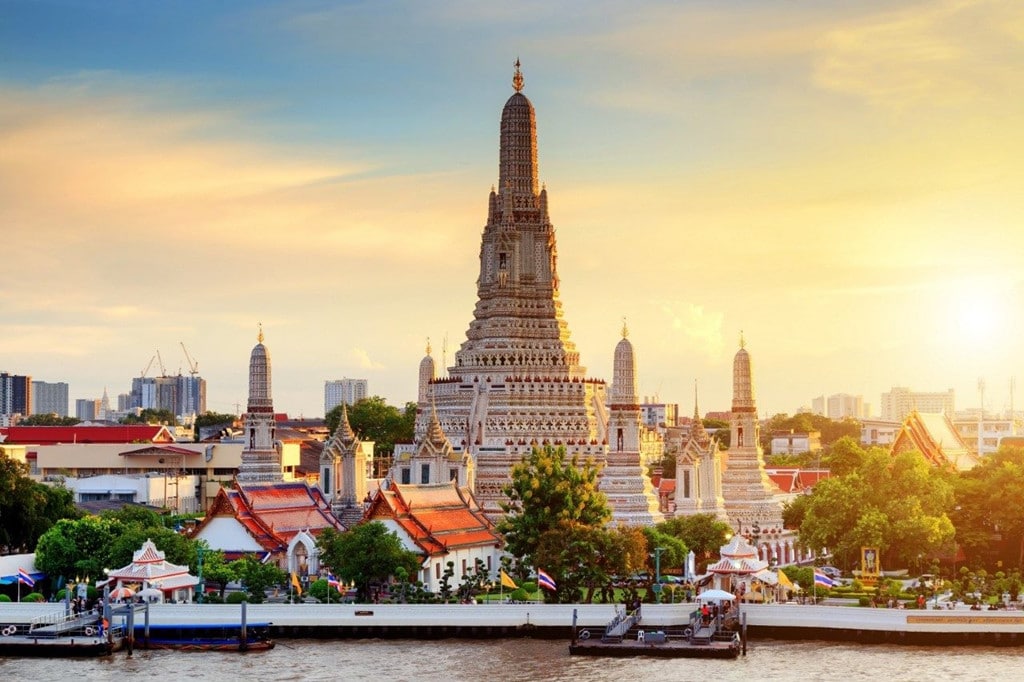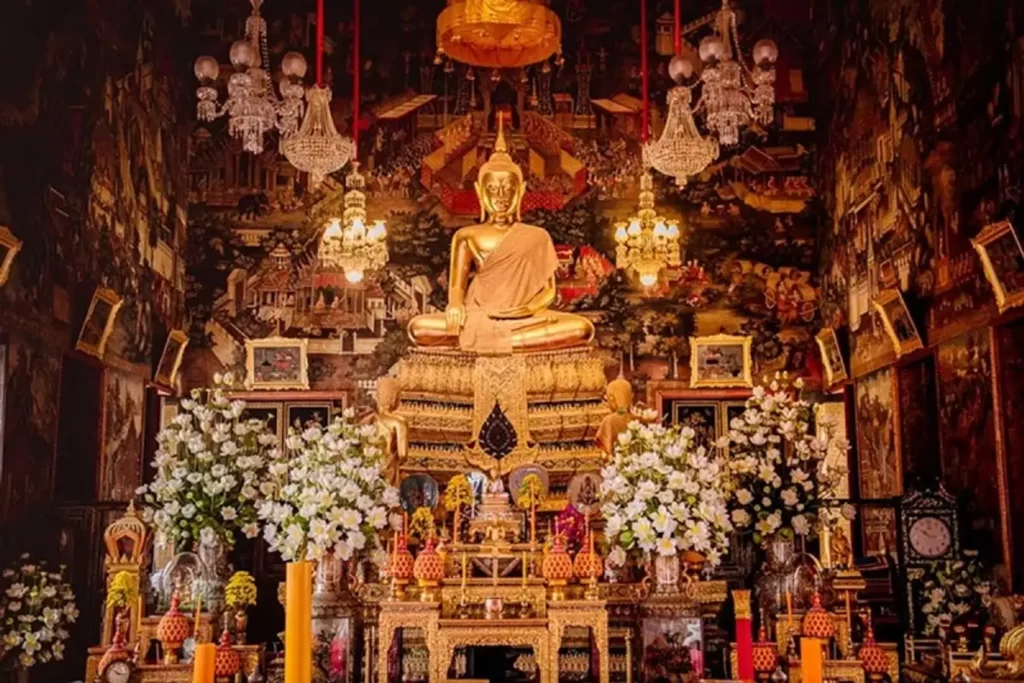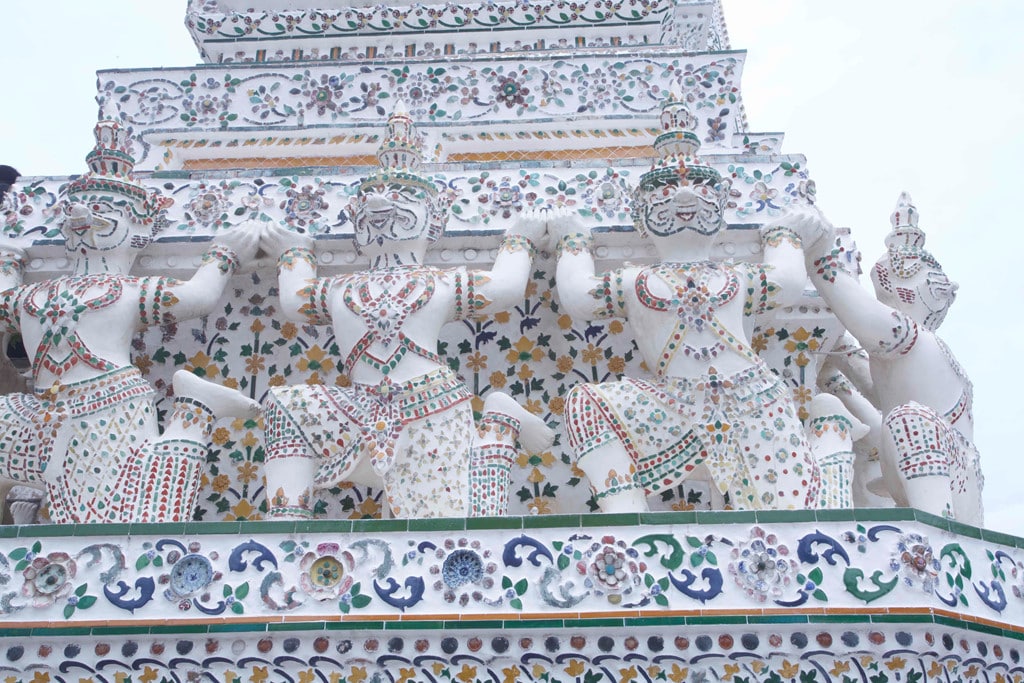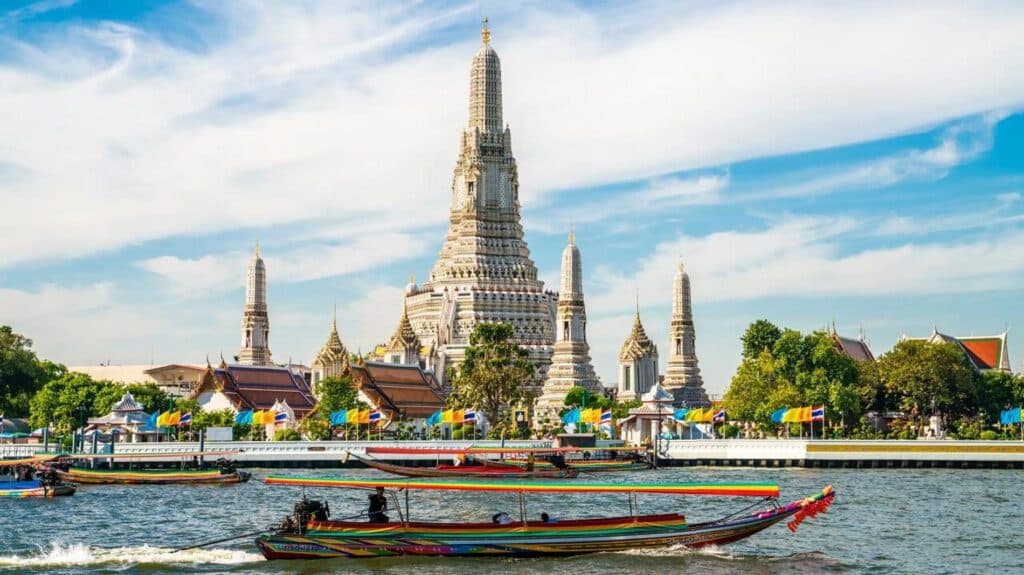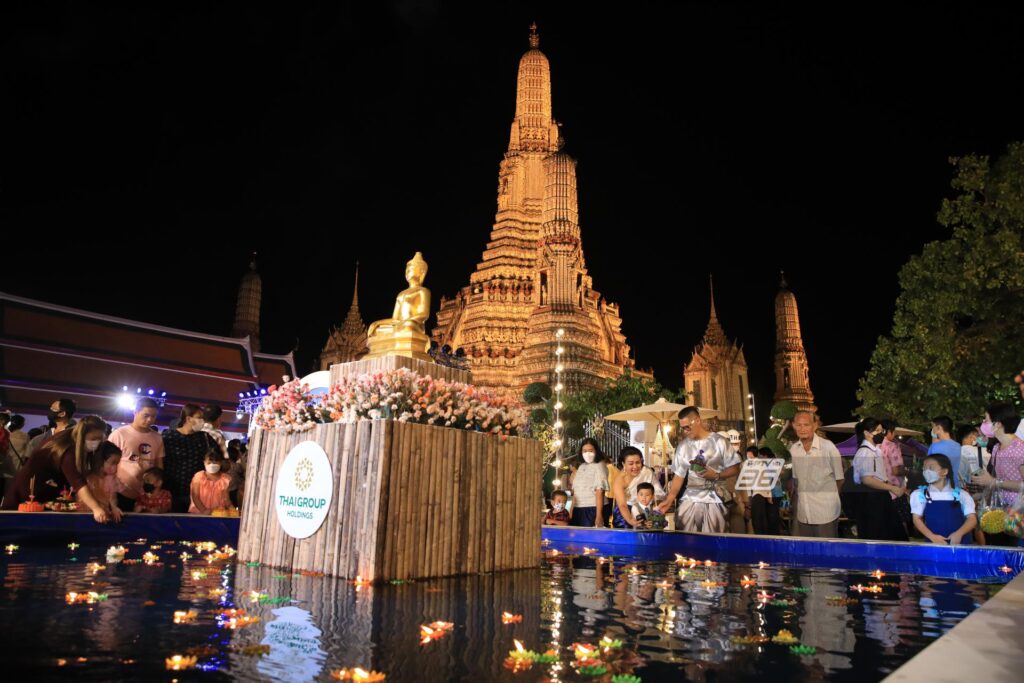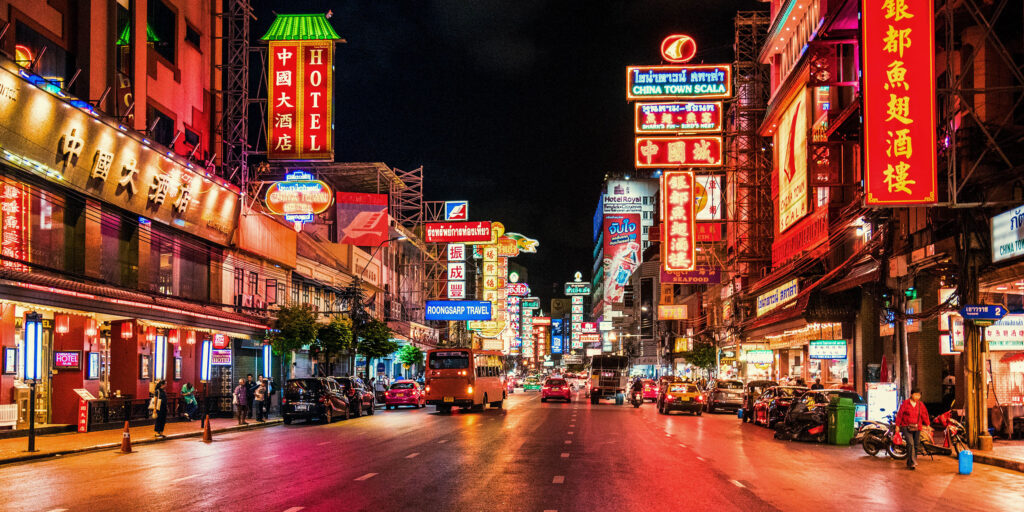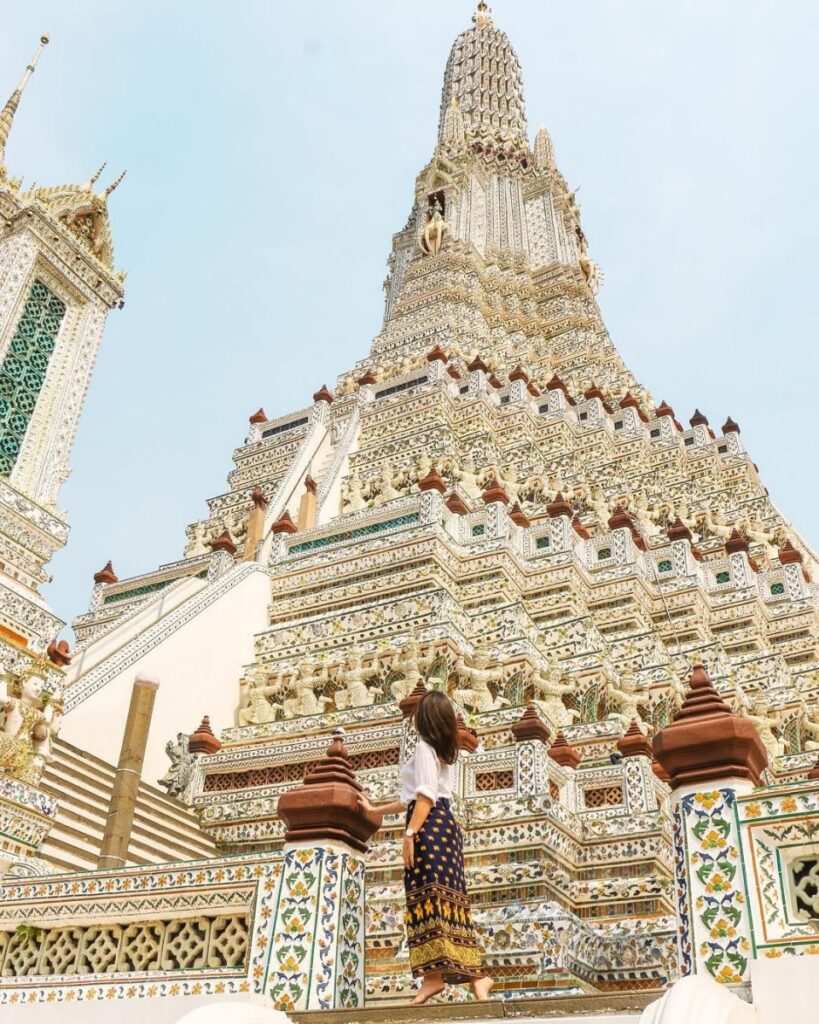Considered the land of golden temples, Thailand has long preserved its beautiful cultural essence, clearly shown through the countless temples that adorn the country. Among these, Wat Arun (Temple of Dawn), located in bustling Bangkok, stands out as a gem.
When you have the opportunity to visit this majestic temple, you will find yourself in one of Thailand’s most spiritual places, and a famous landmark for both pilgrims and tourists around the world. Wat Arun is not only a testament to the country’s devout faith; It’s a picture where Thailand’s distinctive architectural style and rich heritage come alive.
Introducing Wat Arun Temple
Where is Wat Arun Temple located?
Wat Arun Temple, known fully as Wat Arun Ratchawararam Ratchaworamahawihan, graces the banks of the Chao Phraya River, situated not far from the heart of Thailand’s bustling capital, Bangkok. Its precise location is at 158 Thanon Wang Doem, Khwaeng Wat Arun, in the Bangkok Yai district of Bangkok, Thailand.
More than just a religious hub for the local populace, Wat Arun holds a profound historical and architectural significance. Its presence is not only a source of spiritual inspiration but also a cornerstone in the thriving tourism industry of Thailand, drawing visitors from all corners of the globe to marvel at its beauty and grandeur.
The Best time to visit Wat Arun
Wat Arun warmly welcomes visitors year-round, so you can plan a trip to this temple at any time that suits you. However, if you’re looking for the ideal period, the months from November to February are often recommended. During these months, Bangkok’s weather is relatively cool and dry, making it a comfortable time for tourists to explore and appreciate the temple’s grandeur without the discomfort of the intense heat and humidity that can be prevalent at other times of the year.
After soaking in the splendor of Wat Arun, don’t miss the opportunity to explore other captivating sites in the capital. The temple’s convenient location within Bangkok means that a wealth of other attractions await your discovery nearby.
The History of Wat Arun
Wat Arun origins date back to the Ayutthaya period, but it gained prominence during the reign of King Taksin in the late 18th century. After the fall of Ayutthaya to the Burmese, King Taksin relocated the capital to Thonburi, and legend has it that he arrived at the temple just as dawn was breaking, which inspired its current name.
Originally named Wat Makok after the village of Bang Makok in which it was situated, it was later renamed Wat Chaeng. It wasn’t until the reign of King Rama II in the early 19th century that the temple underwent major renovations and took on its distinctive prang (Khmer-style tower) which is adorned with porcelain, symbolizing the blossoming of Buddhism. The temple was completed during the reign of King Rama III and has since stood as a striking embodiment of Rattanakosin-era architecture and Buddhist symbolism.
Wat Arun not only serves as a place of worship but also as a testament to Thailand’s resilience and cultural evolution, reflecting significant chapters in the nation’s history. Its towering prang, one of Bangkok’s most recognizable landmarks, continues to draw admirers from around the world, who are captivated by its rich history and stunning architecture.
Unique architecture of the temple
Wat Arun most striking feature is the central prang, a towering 80-meter spire flanked by four smaller prangs at each corner. These symbolize Mount Meru, the center of the universe in Buddhist cosmology. The prangs are intricately decorated with a combination of bricks, lime, and thousands of colorful porcelain pieces, which sparkle magnificently in the sunlight, bestowing the temple with a dazzling appearance.
The temple is most beautiful when the sun’s glare softens. Early morning, from about 6:00 AM to 8:00 AM, is a magical time to explore Wat Arun, as the dawn light bathes the spires in a golden hue, creating a breathtaking scene. Similarly, dusk is also a splendid time to visit, as the setting sun drapes the temple in a warm golden glow, lending an ethereal atmosphere to the surroundings.
Stepping inside Wat Arun, one is transported into a realm of traditional Thai architectural space. A prominent red-roofed pavilion stands within the compound. Two mythical guardians are situated at the entrance, warding off evil spirits. Similar pavilions are located at each corner of the temple grounds.
Inside the courtyard, an exceptionally striking stone archway with a spiral design greets visitors. This structure stands out with its vibrant colors of orange, brown, lemon yellow, and sky blue. Adjacent to it are statues depicting significant events from the life of the Buddha. Dominating the center is the majestic and imposing central tower. At the heart of the ordination hall lies a solemn and revered golden statue of the Buddha.
Today, many travelers regard Wat Arun as one of the most beautiful temples in Bangkok. Those who visit are encouraged to capture the beauty of this special place in photographs, as it offers a truly exceptional backdrop that’s hard to find elsewhere.
How to get to Wat Arun temple
If you’re coming from central Bangkok, the most scenic and efficient way to reach Wat Arun is by river. First, you’d make your way to the Saphan Taksin BTS station, which is connected to the Sathorn Pier. From there, you can catch a Chao Phraya Express Boat. You’ll want to disembark at Tha Tien Pier, and the journey offers a fantastic opportunity to soak in the sights along the river.
Once you arrive at Tha Tien Pier, you’re almost at Wat Arun’s doorstep. From here, you’ll spot small ferries ready to whisk you across the river directly to the temple. The ferry ride is short but memorable, offering a unique perspective of Temple of Dawn as you approach. It’s also incredibly affordable, costing only a few baht.
Alternatively, if you’re exploring nearby attractions like the Grand Palace or Wat Pho, Wat Arun is just a quick ferry ride across the river from these locations. So, after you’ve wandered through the historic corridors of the Grand Palace or marveled at the reclining Buddha in Wat Pho, you can easily hop on a ferry and find yourself stepping onto the grounds of Wat Arun in no time.
Festivals or special events at Wat Arun
When you visit Wat Arun, you’ll find that it’s not just a stunning piece of architecture; it’s also a living, breathing cultural hub. If you time your visit right, you might be lucky enough to experience one of the special festivals or events that take place at the temple.
One of the most significant events you could witness is Loy Krathong, usually held in November. It’s a festival of lights, where you’ll see thousands of candle-lit krathongs (decorative floating baskets) released on the water, creating a mesmerizing spectacle. The sight of Wat Arun illuminated against the night sky, with twinkling lights reflected on the river, is truly magical.
Another important festival is Songkran, the Thai New Year, which takes place in April. If you’re at Wat Arun during this time, you’ll find yourself in the midst of a joyful celebration. Songkran is known for its water festivities, symbolizing purification and the washing away of sins and bad luck. People splash water on each other, and the atmosphere is one of fun and renewal. At Wat Arun, the celebration includes religious ceremonies, offering you a glimpse into the spiritual significance of this festival.
Apart from these, there are also regular religious ceremonies and events, especially during Buddhist holy days, when the temple comes alive with the faithful engaging in merit-making activities, prayers, and processions. These occasions provide a unique opportunity to immerse yourself in Thai culture and tradition.
The Nearby attractions to Wat Arun
After marveling at the splendor of Wat Arun, you’ll be pleased to know that there’s an abundance of other attractions nearby that you can explore. Just a short ferry ride across the river is Wat Pho, famous for its colossal Reclining Buddha statue and as a center for traditional Thai massage and medicine.
If you’re interested in royal history, the Grand Palace is not to be missed. It’s a short walk from Wat Pho and is one of Bangkok’s most iconic sites, once the residence of the Kings of Siam and now used for official events. The intricate architecture and the sacred Emerald Buddha housed in Wat Phra Kaew on the palace grounds will leave you in awe.
For a taste of local life and a sensory feast, you can stroll through the Pak Khlong Talat flower market. It’s one of the biggest flower markets in Bangkok and offers a riot of colors and fragrances.
As you continue your journey, you might want to visit the Museum of Siam, which provides an engaging and interactive look into Thai history and culture. It’s a great place to deepen your understanding of the country’s rich heritage.
And if you find yourself hungry after all the exploration, head to Yaowarat Road, also known as Bangkok’s Chinatown. Here, you’ll be greeted with a dizzying array of street food, from savory dishes to sweet treats, perfect for refueling before you continue your adventure in the city.
Each of these attractions is just a stone’s throw from Wat Arun, making it easy for you to spend a whole day or even two immersed in the cultural tapestry of Bangkok.
Notes for visitors when visiting Wat Arun
When you’re planning your visit to Wat Arun, there are a few important things you should keep in mind to ensure a smooth and respectful experience:
- Entrance Fee: You’ll need to pay a small fee to enter Wat Arun, usually around 50 Thai Baht. It’s a good idea to have some cash on hand.
- Opening Hours: Typically, you can visit Wat Arun from 8:00 AM to 5:30 PM. However, check ahead in case of changes, especially on special occasions or holidays.
- Dress Code: Dress respectfully. This means:
- Covering your shoulders and knees.
- Avoiding shorts, mini-skirts, and sleeveless tops.
- Wearing comfortable footwear that’s easy to remove, as you may need to take off your shoes before entering certain areas.
- Climbing the Central Prang: If you’re planning to climb the steep stairs of the central prang for a panoramic view, wear comfortable shoes and be mindful of the steepness.
- Photography: You’re free to take photos, but avoid flash photography inside the halls and near the Buddha images out of respect.
- Conduct: Remember that Wat Arun is a place of worship. Keep your voice down and avoid inappropriate behavior.
- Sun Protection: The temple is quite exposed, so on sunny days, bring sunscreen, a hat, and sunglasses.
- Stay Hydrated: Bangkok can be hot, so bring a bottle of water to stay hydrated during your visit.
Previously, visitors could climb the central tower or ‘prang’ of Wat Arun to a certain height. The stairs are quite steep and can be a bit difficult so you should exercise caution, especially when going down. However, when LotusBuddhas visited in August 2023, going up to the tower was prohibited for maintenance reasons.
Climbing the prang not only gives you a closer look at the intricate architectural details but also offers stunning views of the Chao Phraya River and the surrounding area. However, as LotusBuddhas shared, climbing the central tower may be restricted on certain days or times, so you should check the current situation during your visit.
LotusBuddhas sincerely recommends that you visit Wat Arun (Temple of Dawn) when you have the opportunity to come to Thailand. Because it is not just a temple; it is emblematic of Thailand’s rich cultural tapestry and a testament to the country’s architectural ingenuity. It’s an experience that embodies the beauty, history and spirit of Thailand, leaving you with memories that are as timeless as the temple itself.


